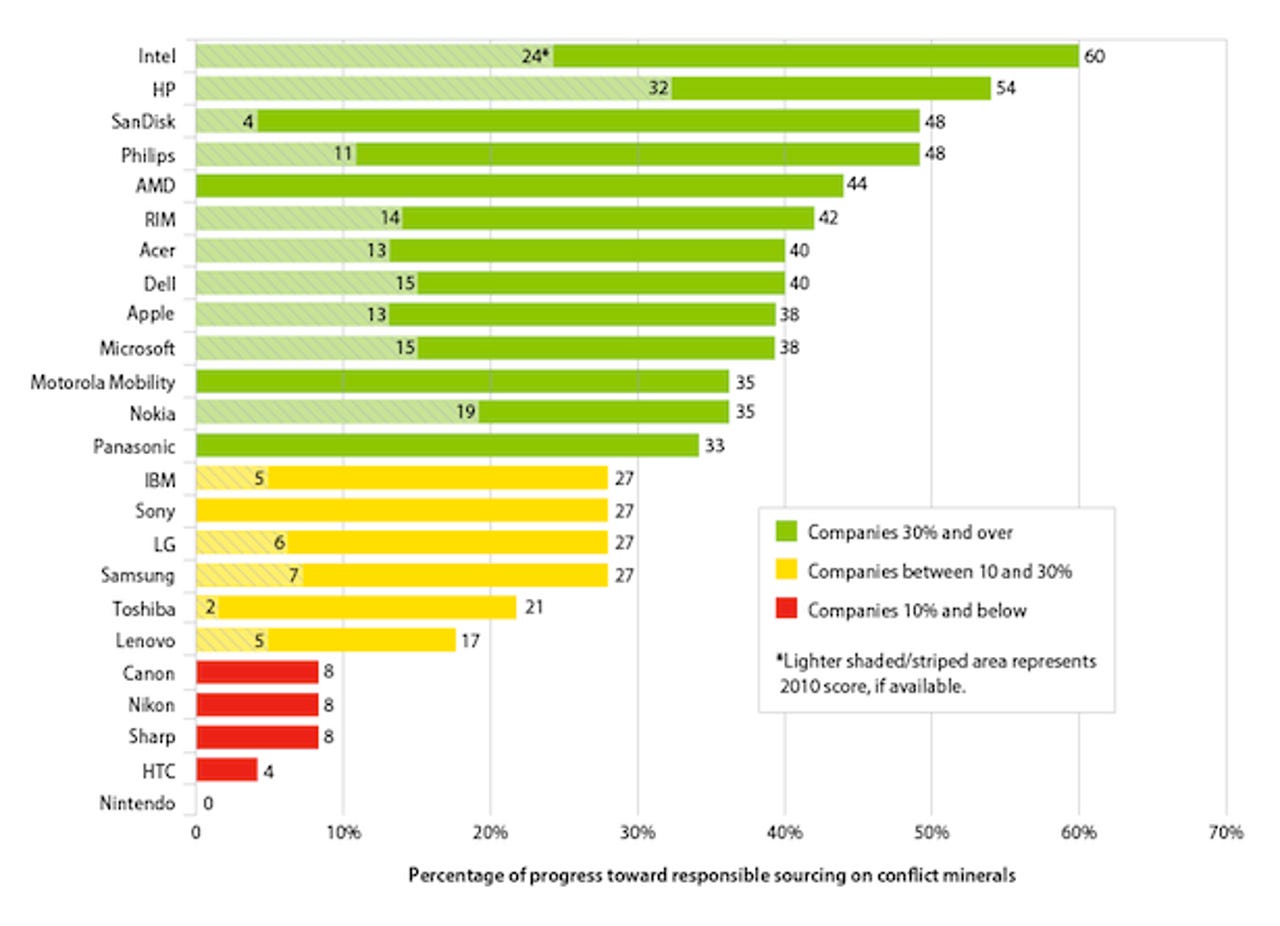Intel leads tech industry in crusade to eliminate conflict minerals

Sometimes high-tech companies do what they say they are going to do. Intel, which has pledged to eliminate all minerals potentially sourced from "conflict" zones in the Congo from its microprocessors by the end of 2013, leads the list of technology companies that have made progress on this goal, reports the Enough Project.
Intel, Hewlett-Packard, Motorola Solutions and Apple have all established policies that focus on removing so-called conflict minerals including tin, tantalum, tungsten and gold, according to the organization's report, "Taking Conflict Out of Consumer Gadgets: Company Rankings on Conflict Minerals 2012."
Six other companies have taken steps toward establishing broader policies: SanDisk, Philips, Sony, Panasonic, RIM and Advanced Micro Devices (AMD).
But game technology company Nintendo gets called out for the opposite reason: it hasn't done anything about this yet, at least not publicly.
"HP and Intel have gone above and beyond the call of duty on conflict minerals," says Sash Lezhnev, an Enough Project analyst who co-authored the report. "It is now time to level the playing field for all companies, and the Securities and Exchange Commission has a key role to play in its upcoming vote on the rules for the conflict minerals law on August 22."
The Dodd-Frank act requires publicly traded companies to disclose sourcing of conflict minerals in their reporting; declaring whether their products contain components related to mines in the Democratic Republic of Congo (DRC) or certain neighboring countries in Central Africa. Those minerals are often used to fund armed guerilla groups in the area, just like conflict diamonds.
The SEC is expected to make the requirements clearly after its discussion next week.
For the complete picture, see the infographic below:

(Chart and image courtesy of the Enough Project)